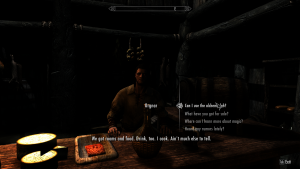Key Concepts of Interactive Narrative
We can define an interactive narrative as one that the author has not created a definitive path for the player/reader to follow. This is where the player/reader gets to chose their own way to follow the story and have an outcome that could be completely different to another player/reader.
One example of a game that uses interactive narrative is Heavy Rain as this game uses a system where the choices made by the player affect the outcome of the game later on such as killing main characters. The narrative of the game focuses on a serial killer which itself is quite an intense concept. The game also has rapid quick time events that can increase the pace of the narrative as the player would have to react quickly or risk a bad situation happening that could potentially affect the player.

https://en.wikipedia.org/wiki/Heavy_Rain#/media/File:Heavy_rain_move.jpg
The role of interactive narrative in video games today
The idea of interactive narrative mostly started with the introduction of text-based adventure games back in the 70’s. However, even though this concept started somewhat a while ago, the idea of interactive narrative still plays a roll in modern video games. It is true that a lot of modern games today, especially triple A titles such as Call of Duty are slowly dropping narrative and focussing on ways of making money, games that still have a narrative often have elements of interaction that can affect the story or gameplay.
The Elder Scrolls V: Skyrim was originally released in 2011 however, is still played massively so I will include this game as an example of interactive today. As the game is an open world RPG, the gameplay is affected by the way the player acts. Does the player choose to side Imperial or Stormcloak? Does the player want to harness the powers of the dragons or does the player want to ignore this and become a master of the arcane? The game also allows the player to choose from a selection of different dialogue options when talking to NPCs which can affect the way the NPC reacts to the player and can often shape the outcome of the interaction or even the quest. For example, the player could choose to Persuade, Intimidate, or Fight a guard to let them in, however, if the player chooses incorrectly, it could risk them being arrested or killed. Branching off of this, Skyrim’s dialogue can also vary if you have completed certain quests or unlocked specific skills. For example, a guard might say “Is that…fur? Coming out of your ears?” if the player has chosen to become a Werewolf in the game.
To conclude this, I feel that the modern games industry is still including interactive narrative in their games but not to so much to the extent that it completely shapes the narrative. This is unless the games main focus is interactive.
Helpful Links:
Link to Skyrim’s guard dialogue – en.usep.net/wiki/Skyrim:Guard_Dialogue

